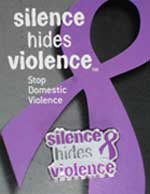Violent Children
In today’s society, we have witnessed a rise in violence for some years; a violence that doesn’t spare the world of childhood.
Children, as early as preschool age, can show violent behaviour in many ways: explosive fits of anger, physical aggression, threats or attempts to hurt others, the use of weapons, cruelty towards animals, the intentional destruction of goods, and vandalism.
The Factors Driving Violence in Children
Several studies concluded that a combination of factors increase the risk of violent behaviours in children. According to specialists, in the majority of cases, it is a reaction to a difficult situation that the child is experiencing. It can be family problems (abuse, violence/neglect as well as a divorce, separation, or any type of emotional separation) or at an academic level (academic failure).
 According to the American Academy of Child and Adolescent Psychiatry, particularly stressful situations linked to the child’s family life such as single parenting, marital breakdown, and the unemployment of a parent (causing a low level of family revenue) can create conditions leading to violence in children and adolescents.
According to the American Academy of Child and Adolescent Psychiatry, particularly stressful situations linked to the child’s family life such as single parenting, marital breakdown, and the unemployment of a parent (causing a low level of family revenue) can create conditions leading to violence in children and adolescents.
The violence is an accumulation of tension and frustrations where the child doesn’t find adequate social means for facing its frustrations and lowering the tension in his or her repertoire (social toolbox). The crisis serves as the safety valve to lower this pressure.
“Negative” parenting
Various aspects of parenting can contribute to a violent behaviour in children.
In fact, there are educational shortcomings of parents that can be seen in poor supervision (lack of monitoring and supervising children), parental delinquency, discipline that is too harsh (laxity and disciplinary unreasonableness), a parental disagreement, rejection of the child, and limited participation and/or lack of interest in the child’s activities. The parents who show this type of behaviour encourage the aggressiveness of their children.
Exposure to Violence
Mistreatment represents one of the principal risk factors of violent behaviour in children. By mistreatment we mean, above all, direct violence such as corporal punishment, sexual violence, psychological violence, and neglect. Some studies show also that the simple fact of witnessing violence is mistreatment.
Hence, children who witness conjugal/family violence (seen or heard) suffer as much as children who are direct victims of violence because the reported consequences are the same.
Influence of the Media
Based on their age, children watch and understand television differently. This depends on their attention span, the way they process information received, the intellectual effort exerted, and their life experience.
A number of research studies, mostly done by Anglo-Saxon countries, (Canada, United States), show a correlation between violence in the media (television and video games) and the aggressive behaviour seen in children and adolescents.
 It would appear that the more time a child spends in front of the television, the more violent he becomes. A 2010 study conducted by Columbia University and the Mount Sinai Medical Center in New York confirms it. In fact, adolescents who watched more than an hour of television a day were more apt to commit acts of violence.
It would appear that the more time a child spends in front of the television, the more violent he becomes. A 2010 study conducted by Columbia University and the Mount Sinai Medical Center in New York confirms it. In fact, adolescents who watched more than an hour of television a day were more apt to commit acts of violence.
It’s the same concerning the impact of video games, as shown in another study published in 2008 in the AAP (American Academy of Pediatrics) journal. This research, conducted on youth from 9 to 18 years old from Japan and the United States, confirms that the rise in physical aggression in adolescents can be seen 3 to 6 months after having played violent games.
Alcohol
WHO considers underage consumption of alcohol, drugs, and tobacco as being one of the risk factors of violence at an individual level. Presently, there is no global study indicating the link between alcohol and aggressiveness in youth. However, according to a study published in the American Journal of Public Health, the consumption of alcohol turned out to be closely linked to violent aggressions in the communities and especially in the neighbourhoods that have the most bars. The statistics from this study are the following:
- 28 % of child suicides from 9 to 15 years old are attributed to alcohol
- 40 % of young sexual delinquents admit to being intoxicated at the moment of the offense/li>
- More than 70,000 students between 18 and 24 years old were victims of sexual crimes linked to alcohol in 2002
Violence at School
Educational violence statistics show that boys are two times more likely to be threatened or injured at school with a weapon and are two to three times more likely to carry a weapon to school.
For example, in the United States serious crimes with school violence reached a higher level in the 1990s. As a matter of fact, a series of school shootings cost the life of a significant number of adolescents. During the 2006-2007 school year, there were 27 homicides and 8 suicides. At the same time, there were 1.7 million non-fatal crimes committed at school, ranging from assault to theft. These school violence statistics represent 46 deaths out of 1,000 students.
Displays of Violence in Children
For about fifteen years, we have observed an explosion of violence in children less than ten years old. Even though it touches every background, violence is mainly expressed at school.
In the list of violent behaviours in children, we note insults, physical attacks, and crimes. Face-to-face bullying (harassment, teasing, and physical violence) of the weakest students can also be considered crimes and occur much more openly. The incivilities that concern people or objects are also committed by children who are often members of gangs, clearly more numerous and more visible.
Some Statistics on Violence in Children
According to WHO’s 2011 global statistics, there were 250,000 homicides annually of youth from 10 to 29 years old;the majority of the authors and the victims were males. For each young person killed, 20 to 40 suffer from serious injuries from fights and brutalities (punches, kicks, knives, blunt objects).
With respect to sexual violence a multi-country study reports that 3 to 24% of women admit to having had their first sexual experience under constraint. And finally, a study on 40 countries shows that exposure to brutalities and harassment touched as many boys (8.6 to 45.2%) as girls (4.8 to 45.8%).
 Concerning physical violence, one must pay extra attention to certain countries, such as Canada and the United States. In 1997, in Canada, 58 homicides were recorded among young men from 15 to 24 years old, which makes homicides the fourth cause of death after involuntary injuries and suicides.
Concerning physical violence, one must pay extra attention to certain countries, such as Canada and the United States. In 1997, in Canada, 58 homicides were recorded among young men from 15 to 24 years old, which makes homicides the fourth cause of death after involuntary injuries and suicides.
Each year, around one in ten youth have an altercation with the police for having violated the criminal code. Among these young people, 19 % are accused of a violent infraction. A poll conducted with children from 4th to 11th grade revealed that 15% of them had been made the subject of bullying more than once or twice in the six weeks before the poll.
In 2001 in the United States, 15 % of arrests for violent crimes involved youth under the age of 18. In 2000, around 9 % of murders in the United States are committed by young people less than 18 years old. More than one child out of 6 from 2nd grade to 6th grade indicated having been subject to bullying on certain occasions, and more than 1 child in 12 indicated having been subject to bully once or more per week.
How to Prevent Violence in Children
The Committee of the Rights of the Child have not yet spoken on the subject of “violent children”. However, given the different general comments, notably on the establishment of the Convention (no. 5/2003), on the protection against corporal punishment (No. 8/2006), on the right of the child to be protected against all forms of violence (no. 13/2011), on the right of children to healthcare (GC No. 4/2003 and 15/2013), we can reasonably expect an intervention on behalf of the State parties.
Certain programs were already established with discrete success. At the national level, we can mention:
- The campaigns against harassment among peers (mainly at school)
- The programs of social development for anger management and conflict resolution
- The parent support programmes (financial, educational, etc.)
- Restrictive policies regarding the authorisation and purchase of firearms, as well as access to alcohol or other addictive substances
At the international level, we first find Recommendation 19 (2006) of the Council of Europe on positive parenting where the States were asked to encourage this type of parenting by supplying all necessary support (financial, medical, and educational).
We should also mention WHO, whose data collecting activities, support of national projects, and development of recommendations to the States concerning the subject of violence in youth allow them to draw attention to the magnitude and the urgency of this problem.
- Comprendre le comportement violent chez les enfants et les adolescents
- Le risque de comportement violent et meurtrier chez l’enfant
- Quelles sont les causes de comportement violent chez les enfants ?
- Alcool et violence
- Statistiques de la violence à l’école
- L’enfant violent
- Craig A. Anderson “Longitudinal Effects of Violent Video Games on Aggression in Japan and the United States” AAP Pediatrics
- OMS : La violence chez les jeunes
- Haut-commissariat aux Droits de l’Homme – Comité des Droits de l’Enfant
- Recommandation du Comité des Ministres (2006) « Parentalité positive »
written by : Dambo Ba & Sandrine translated by : Shazznic Beck Proofread by : Alexandria Harris |
Updated on 26th July 2013 |

